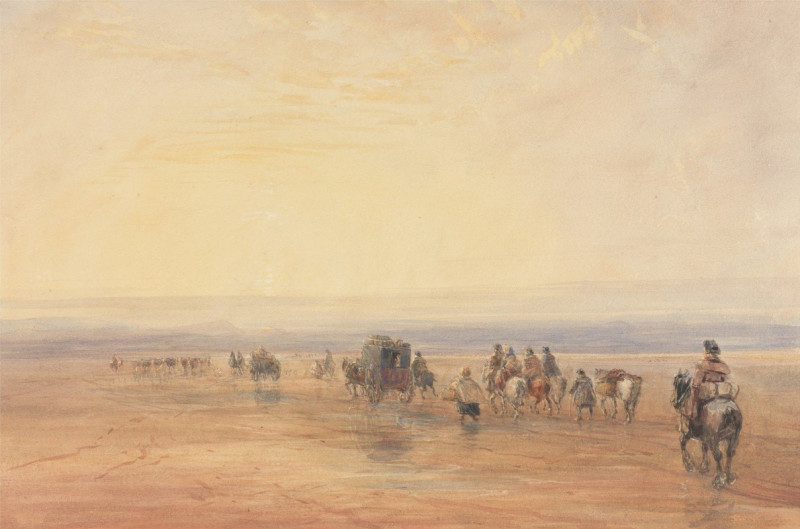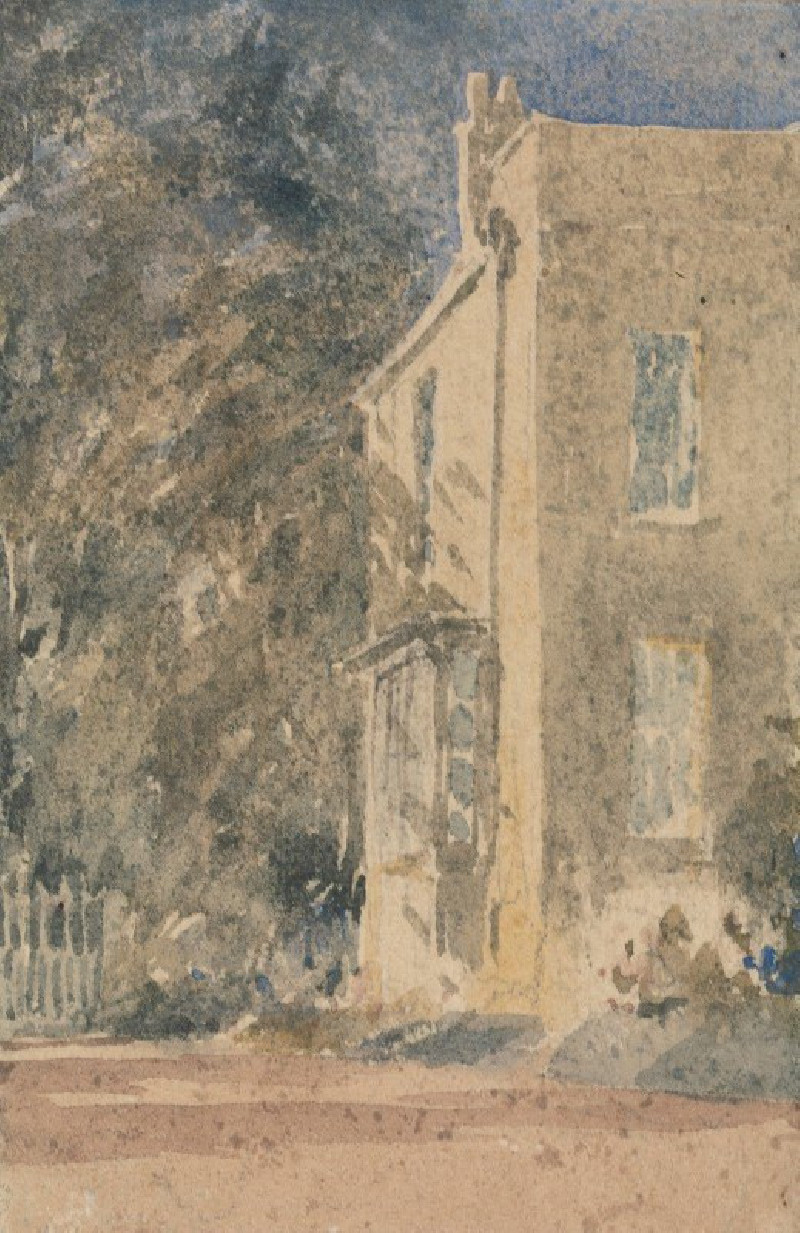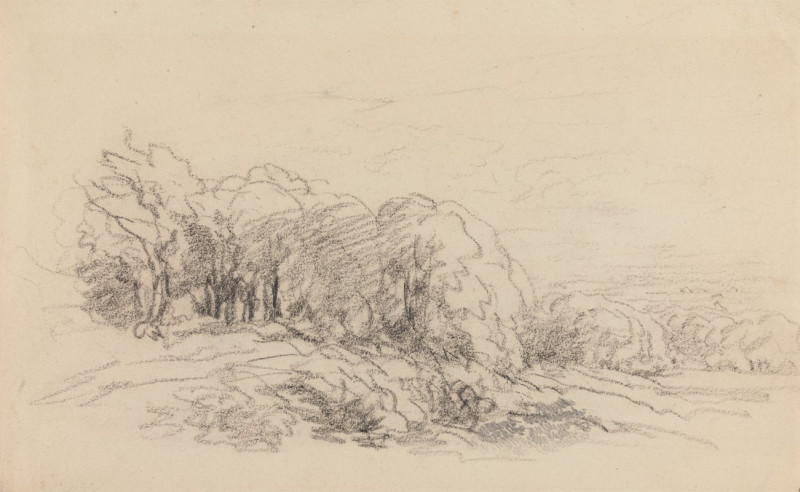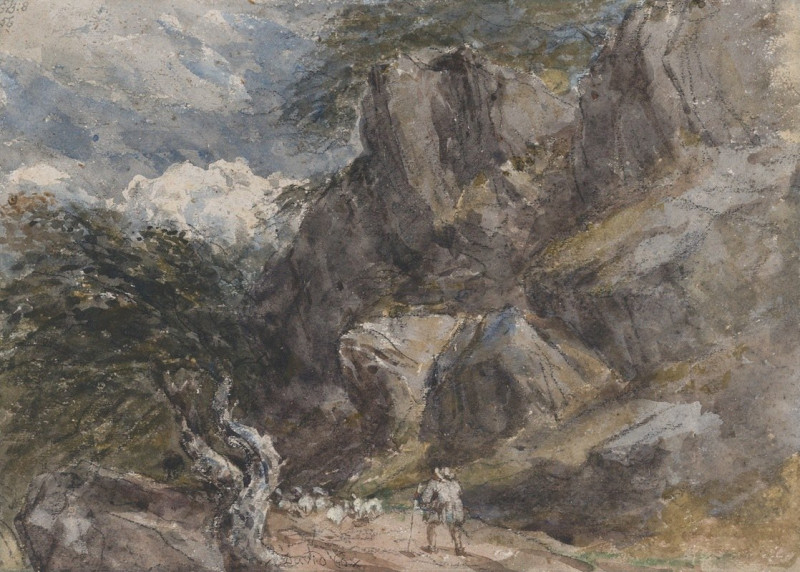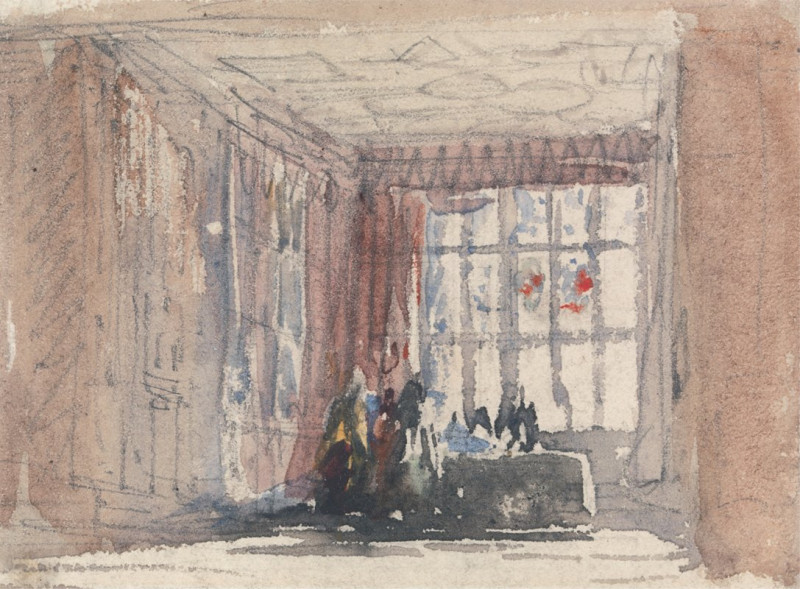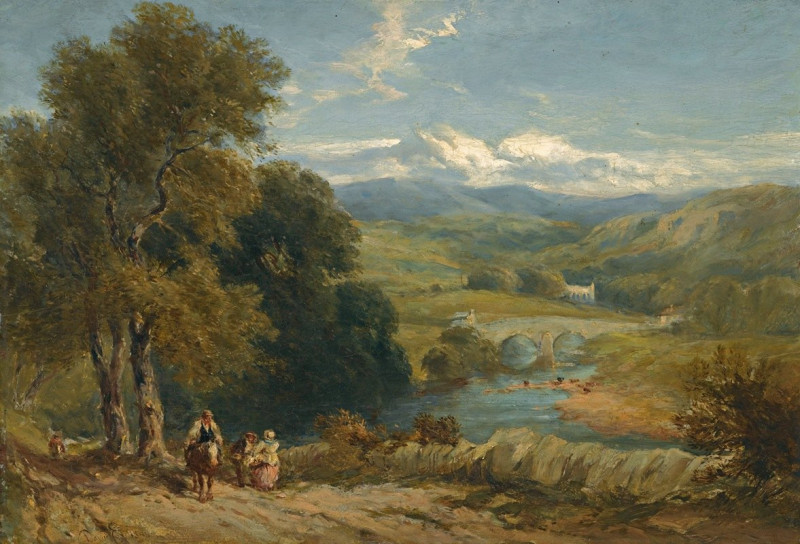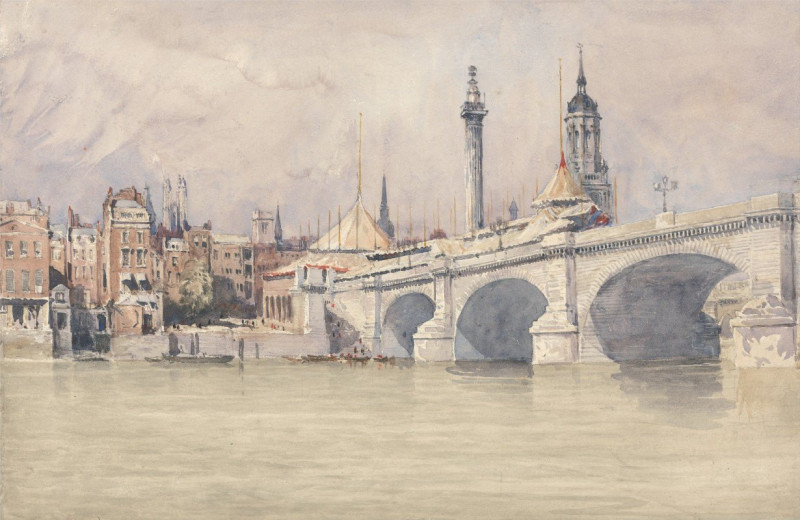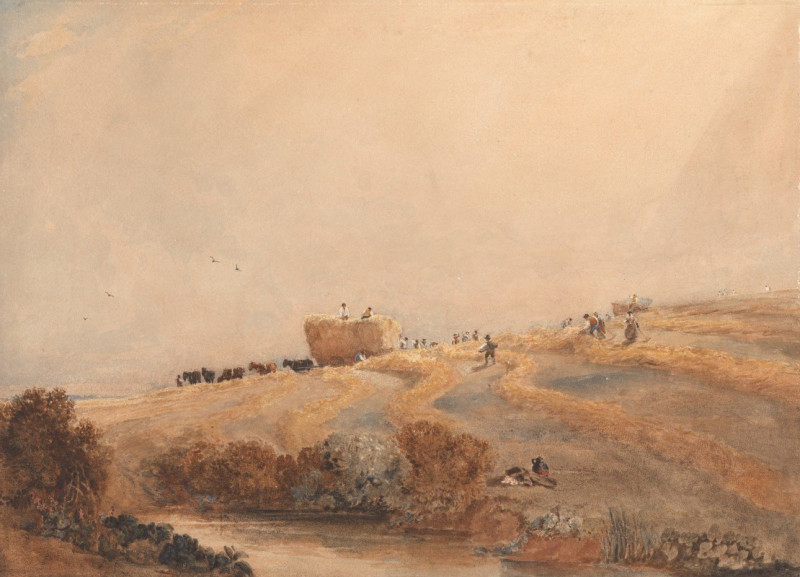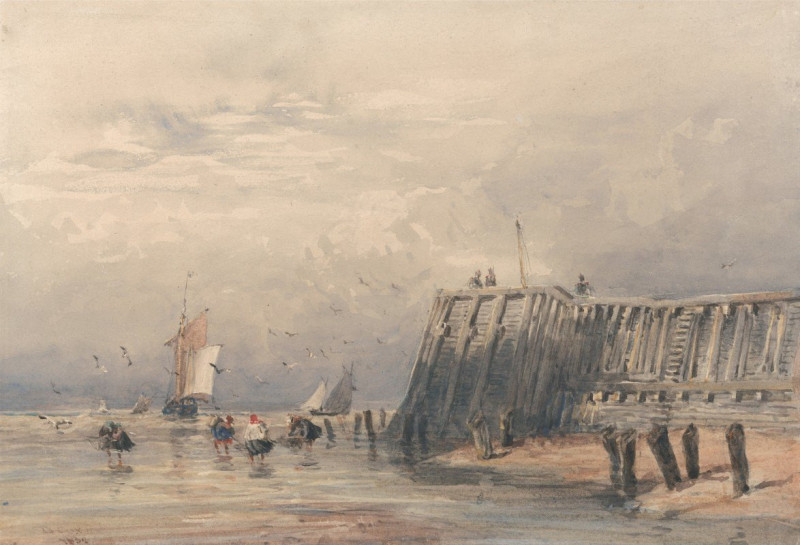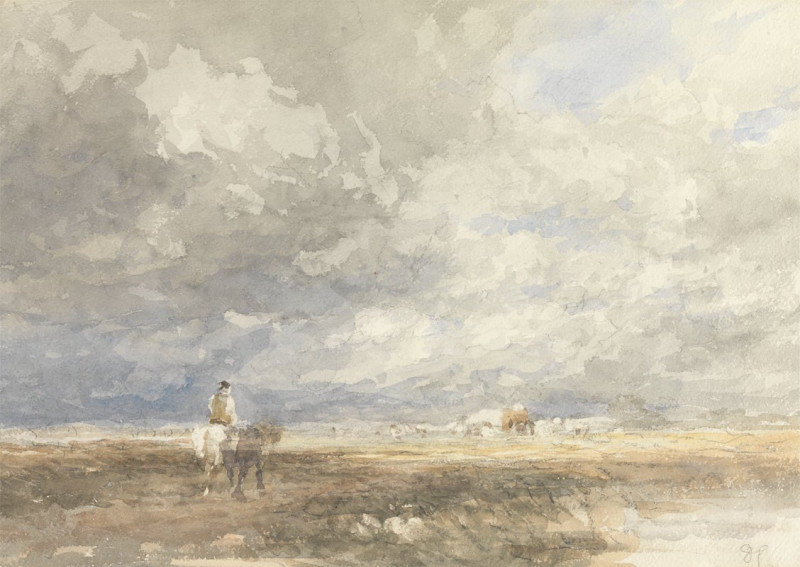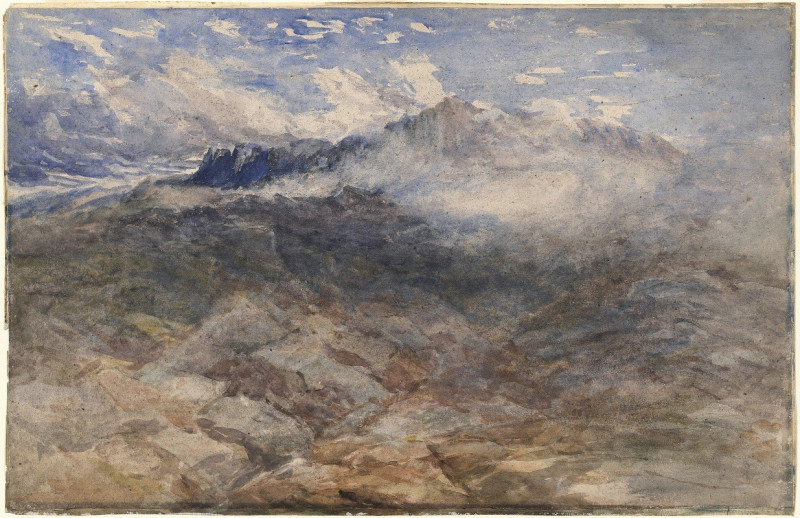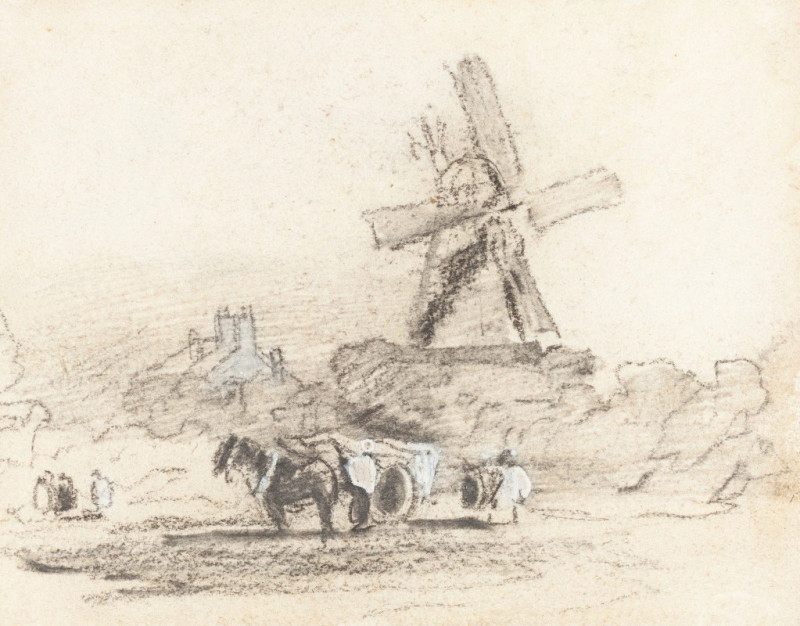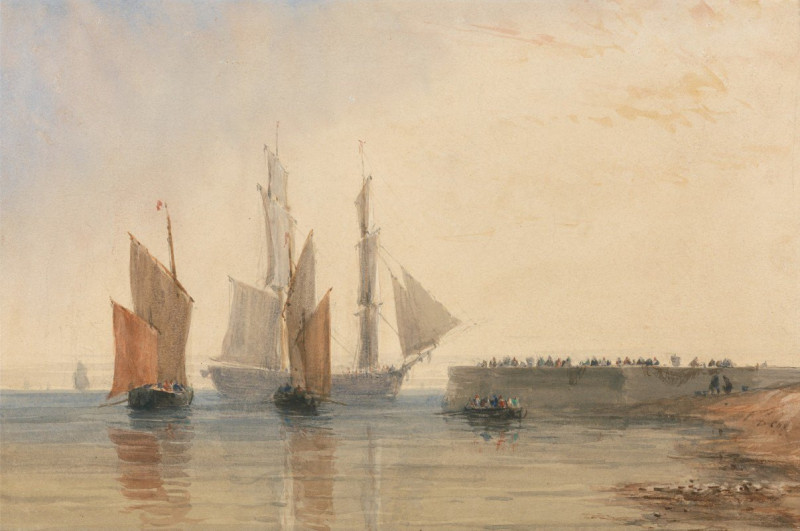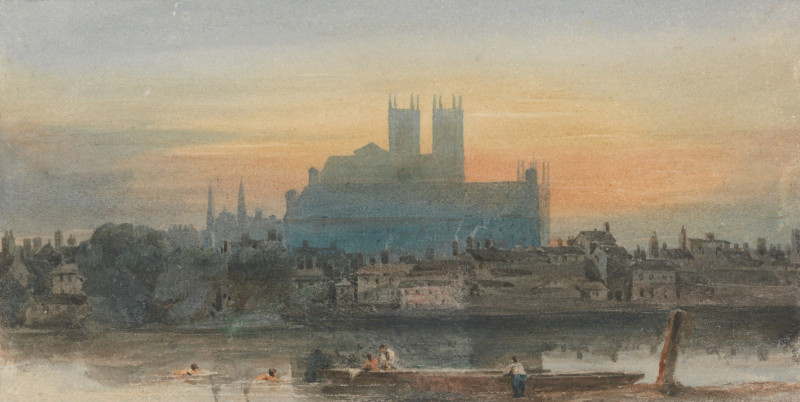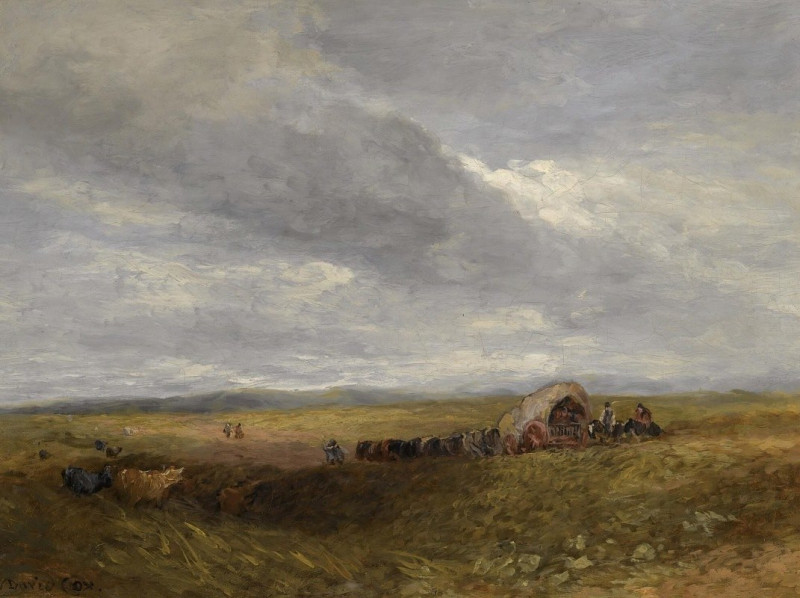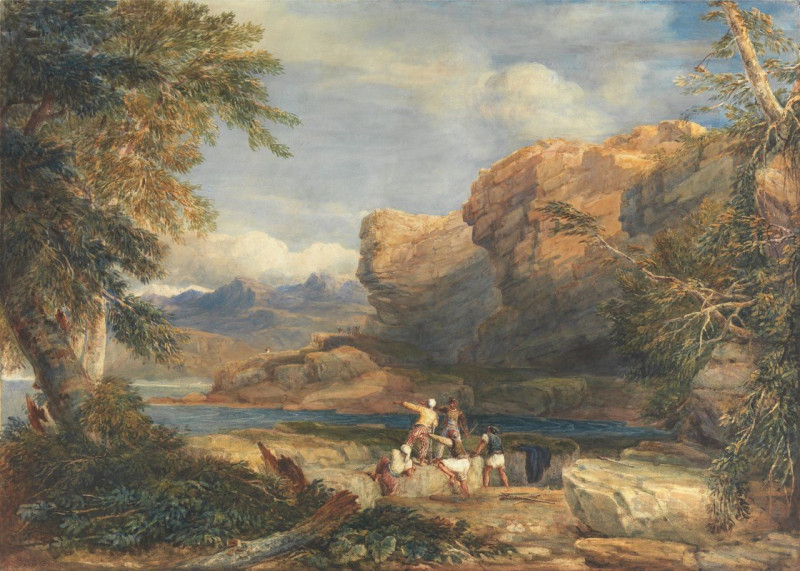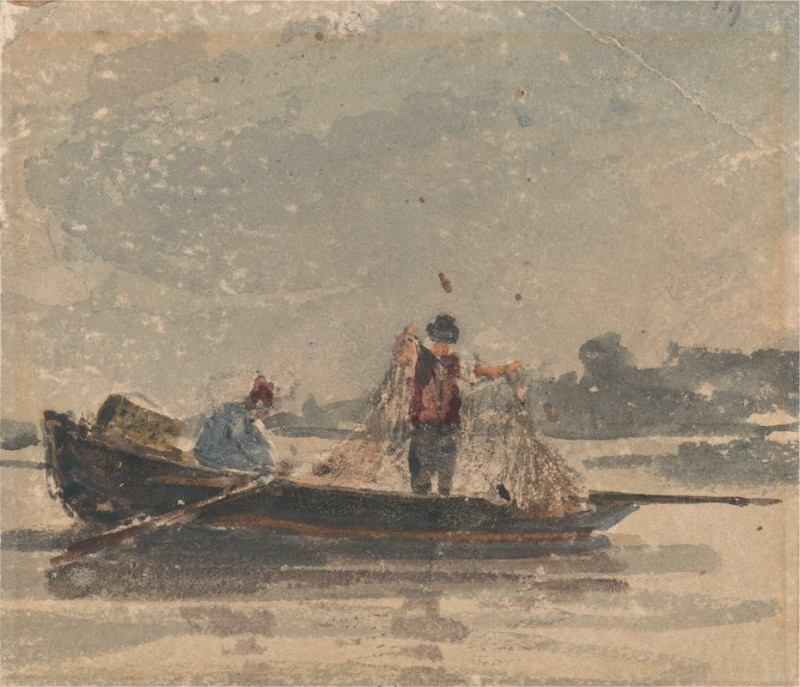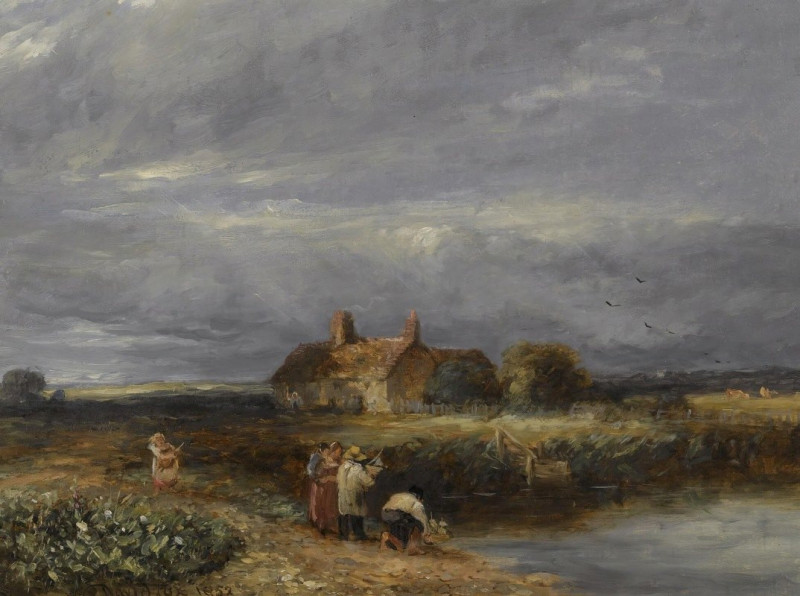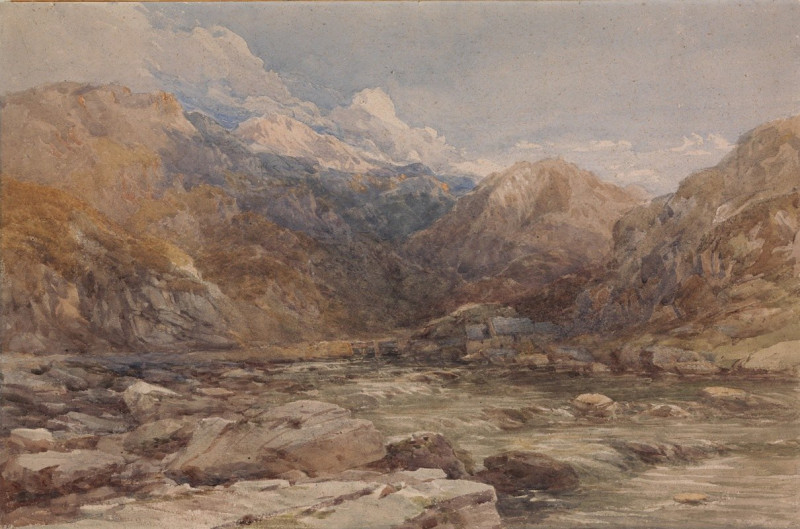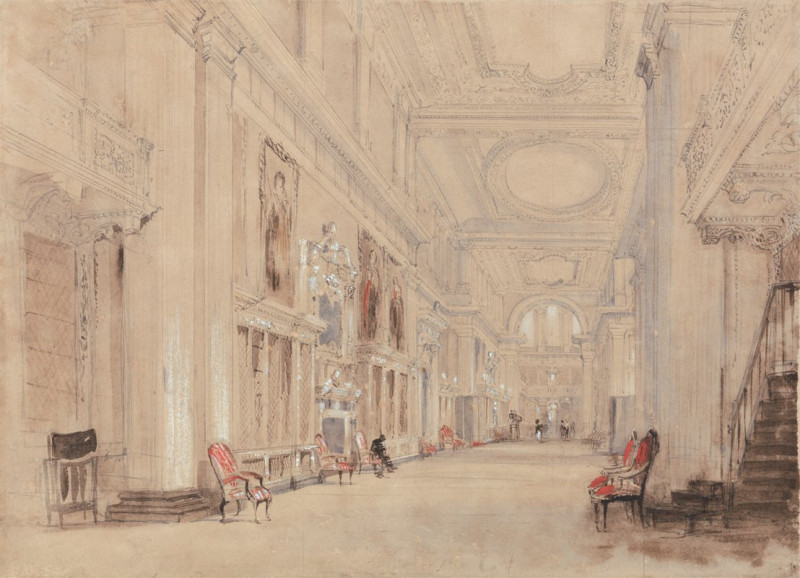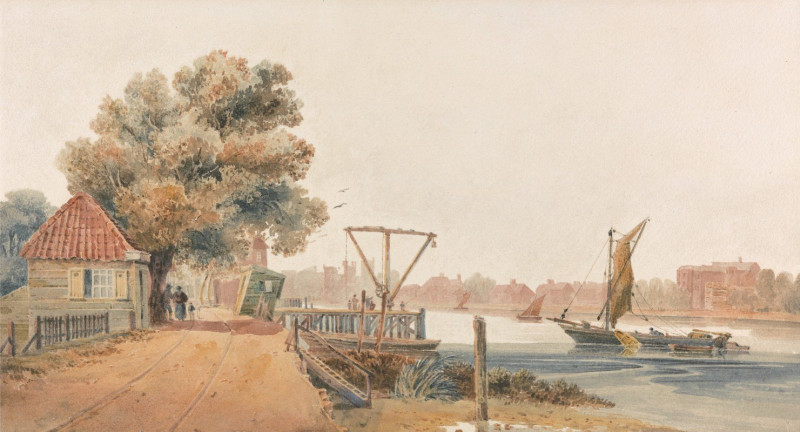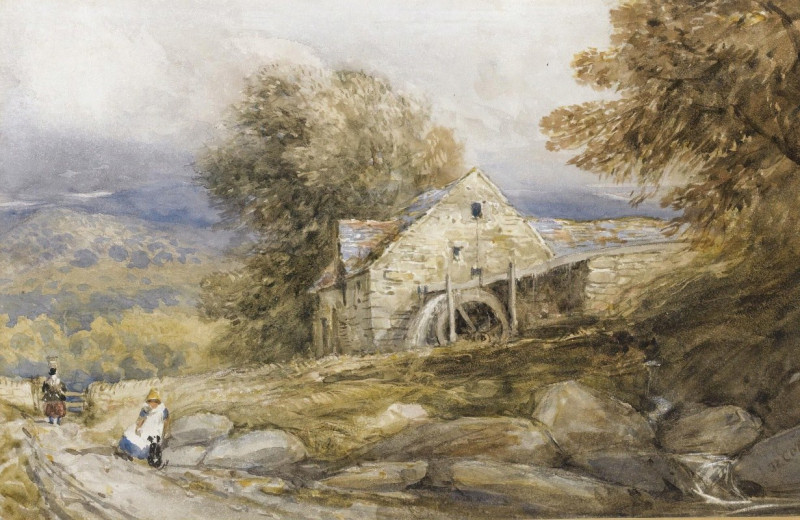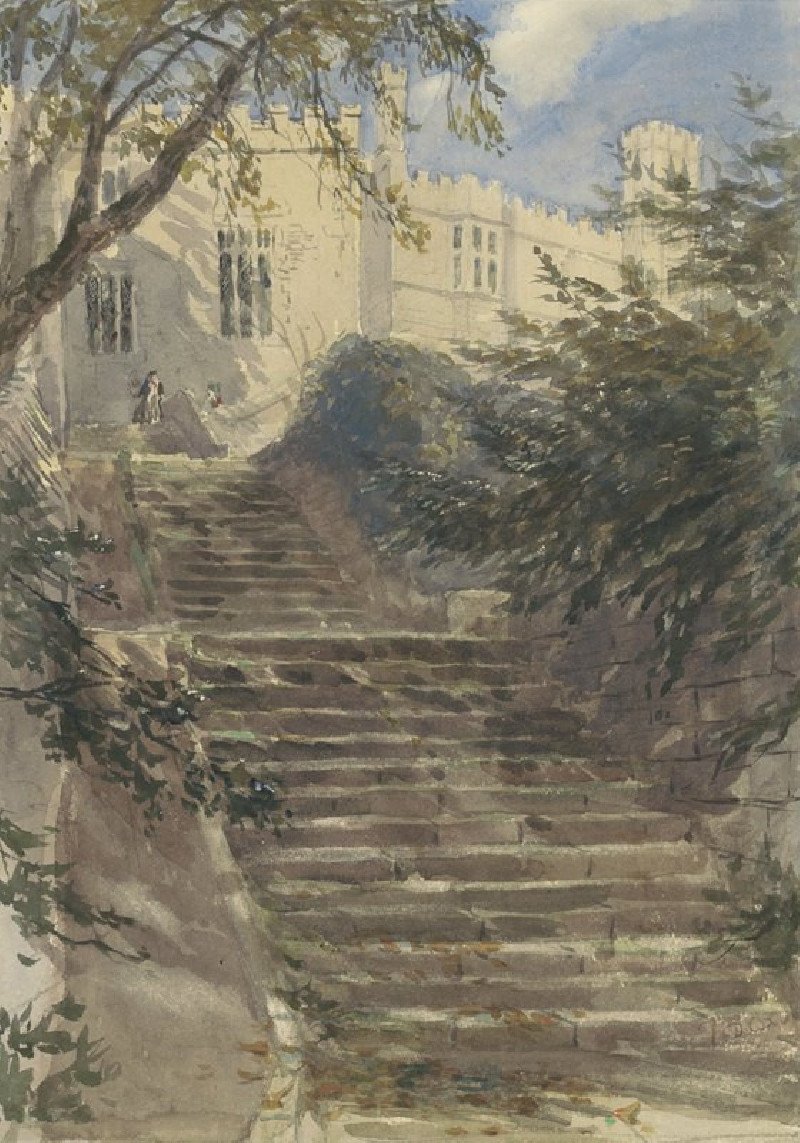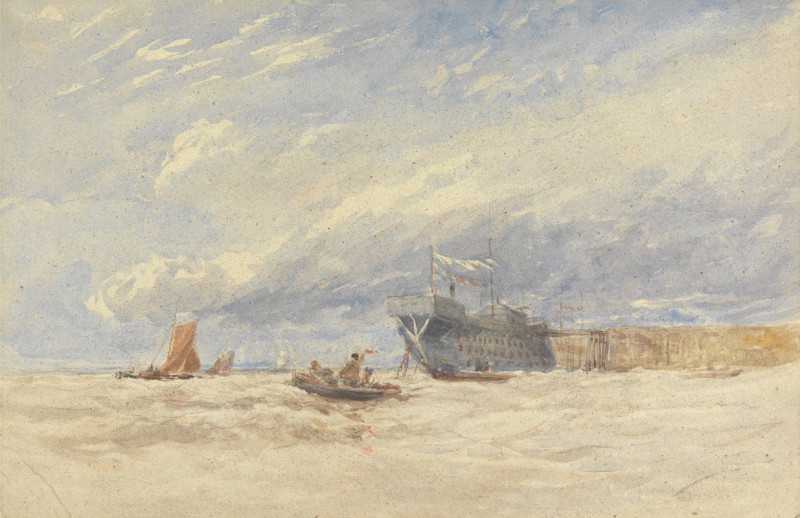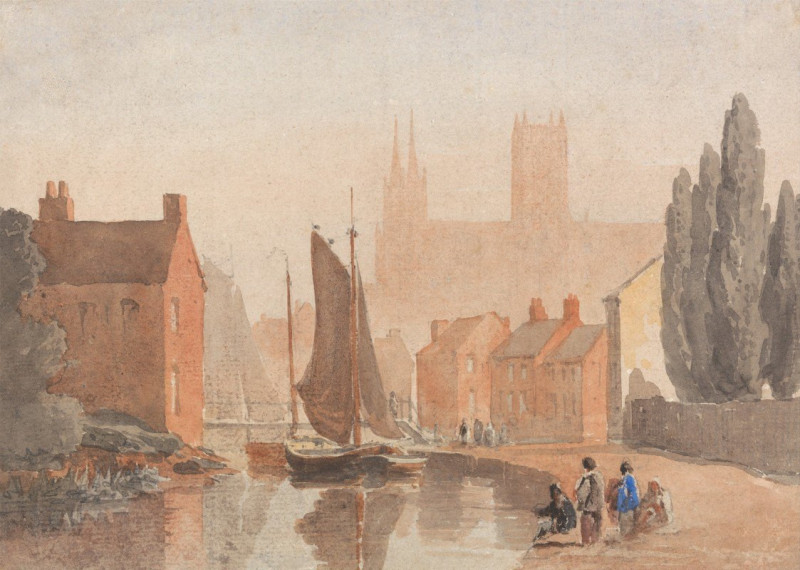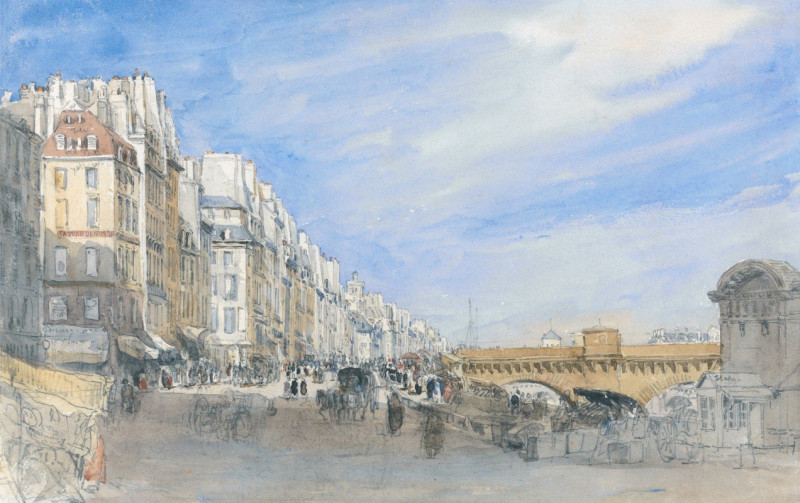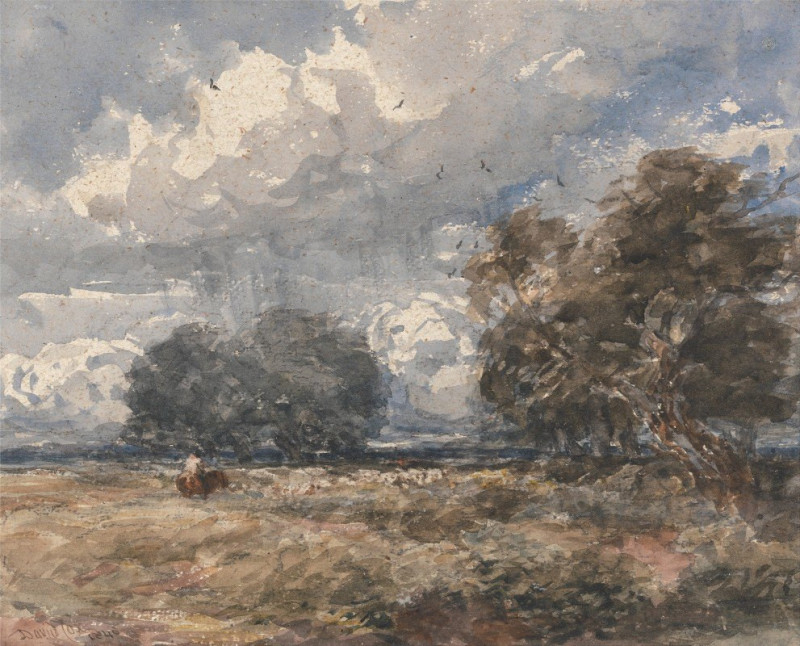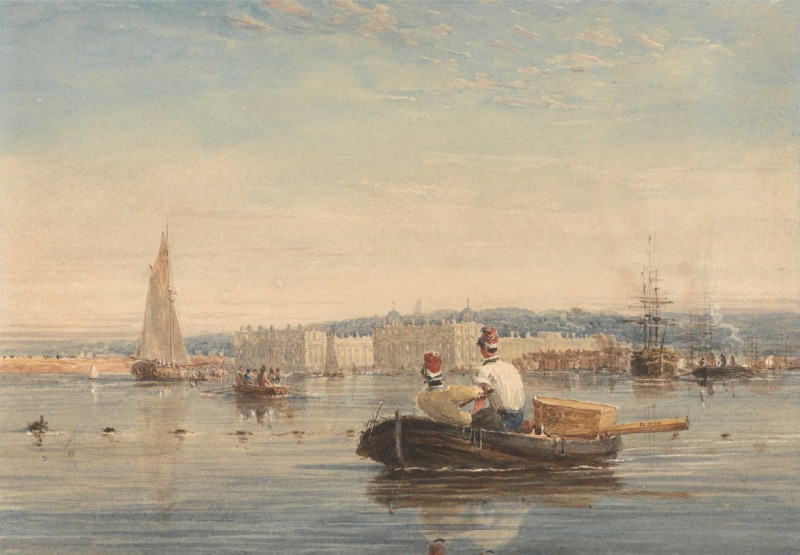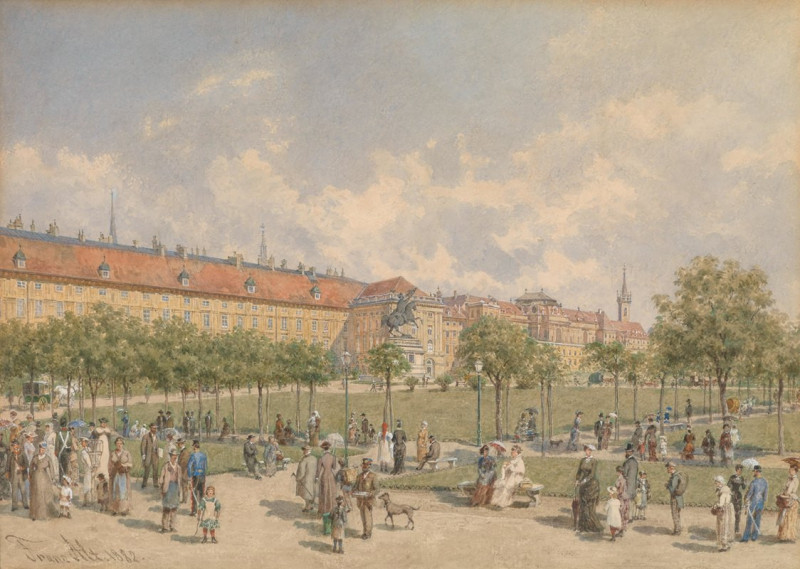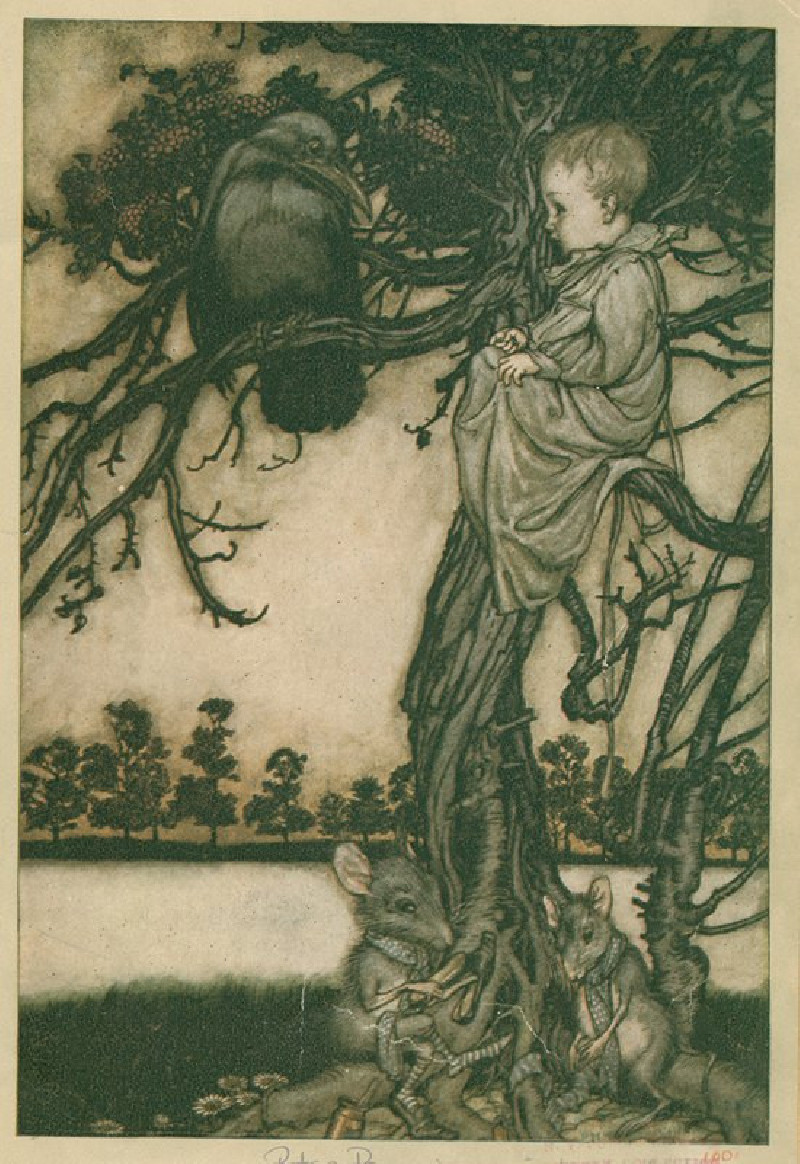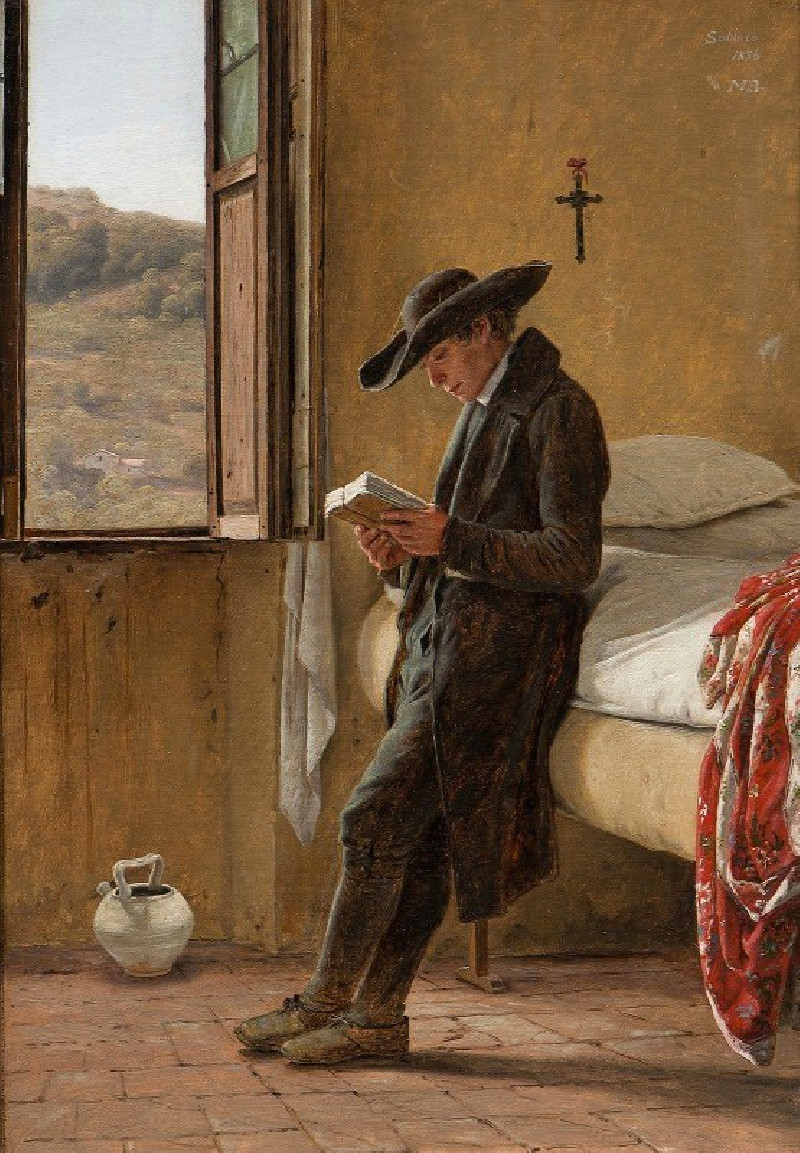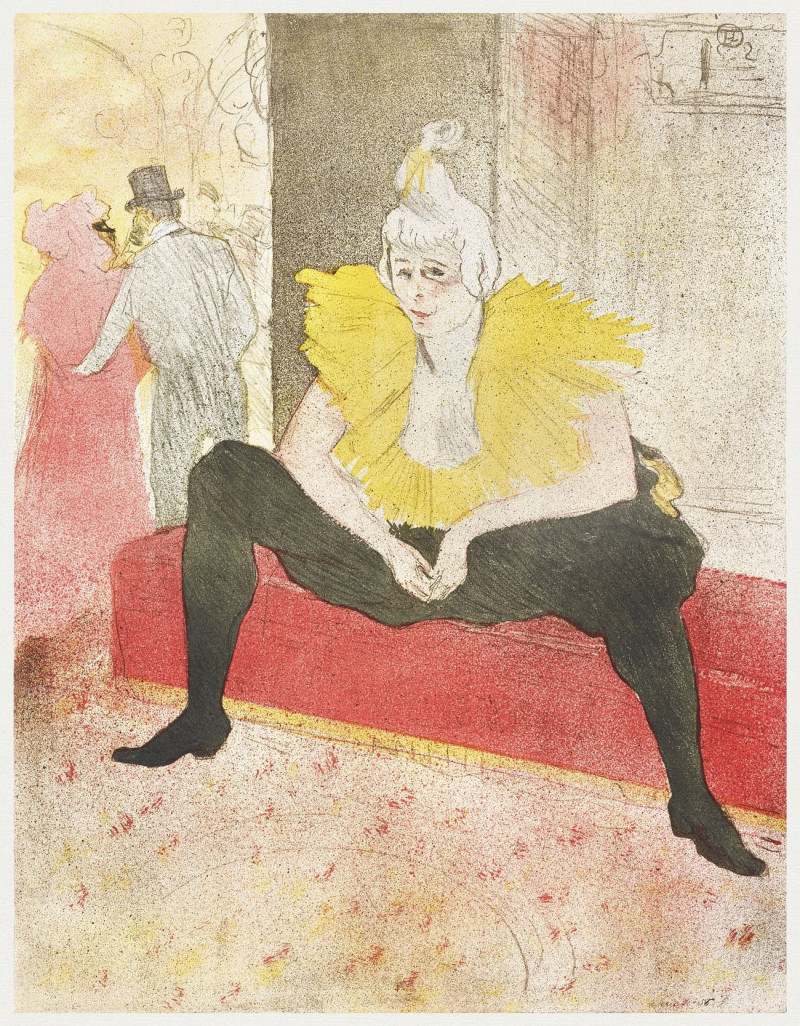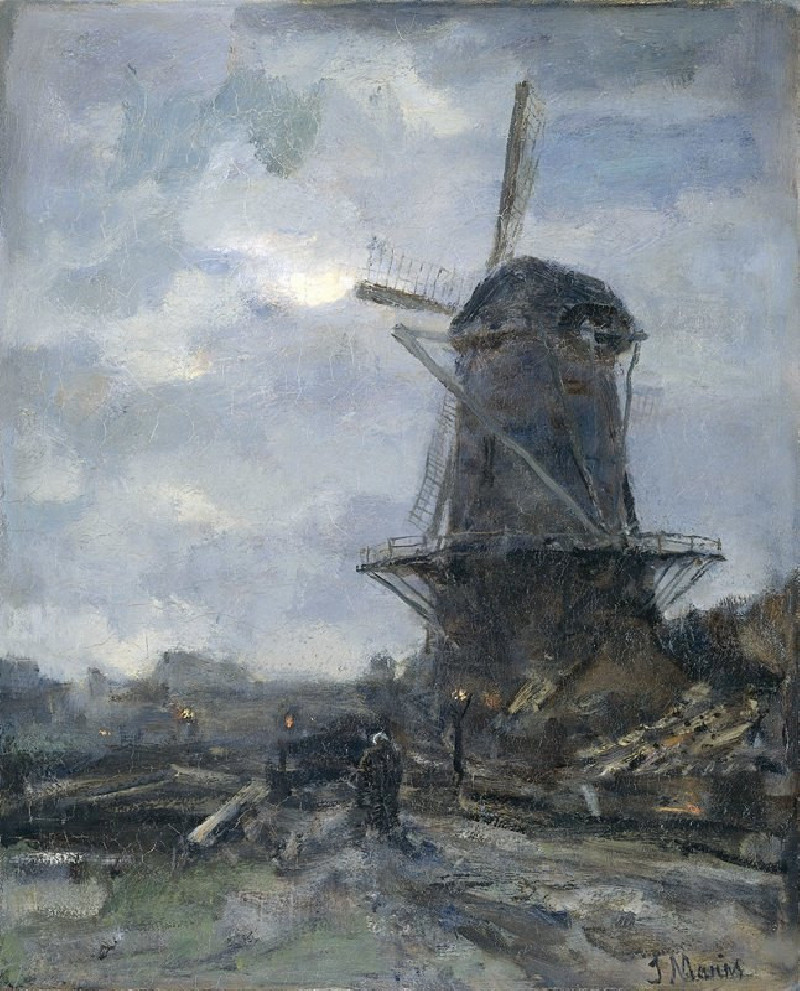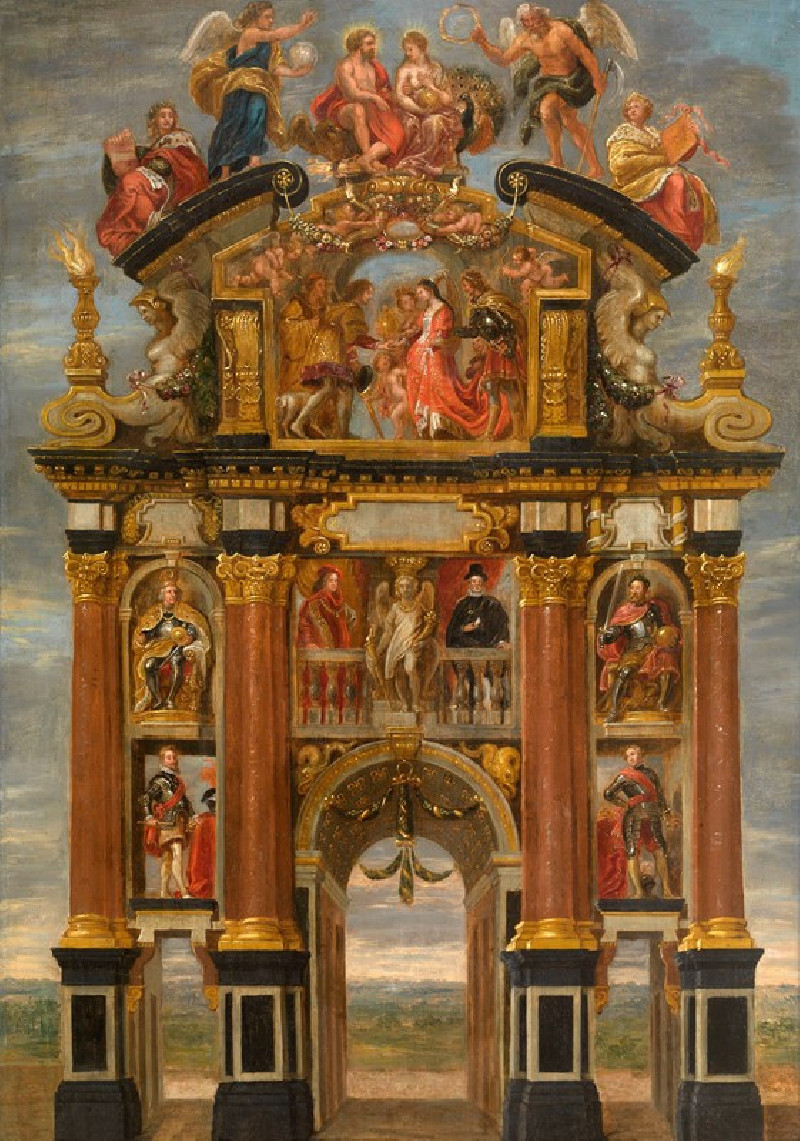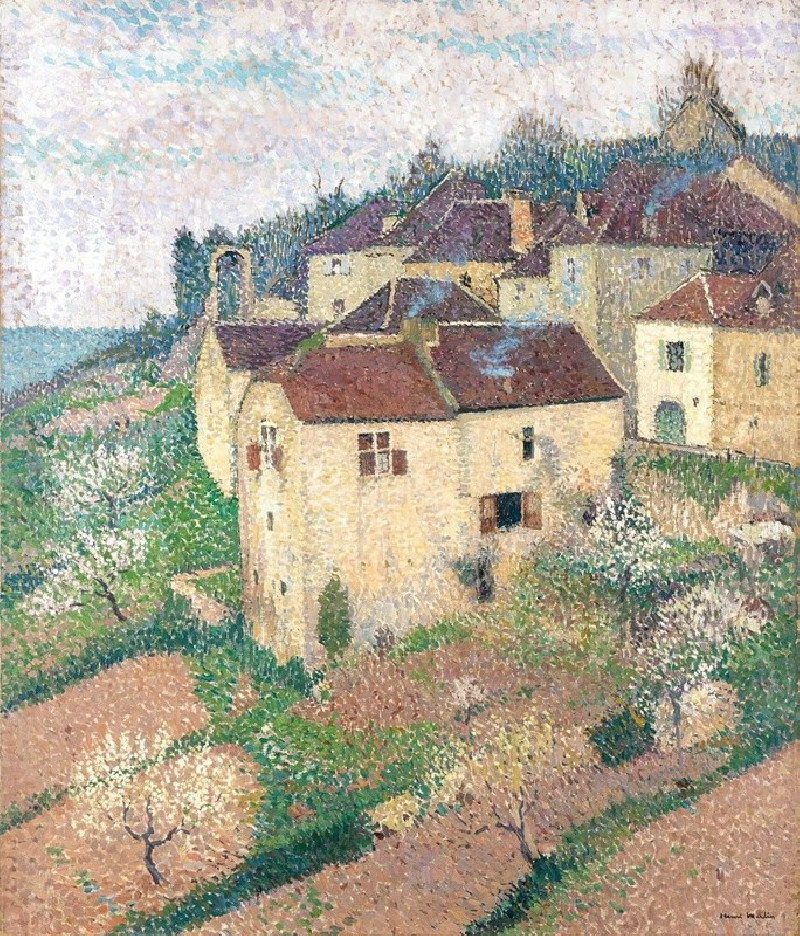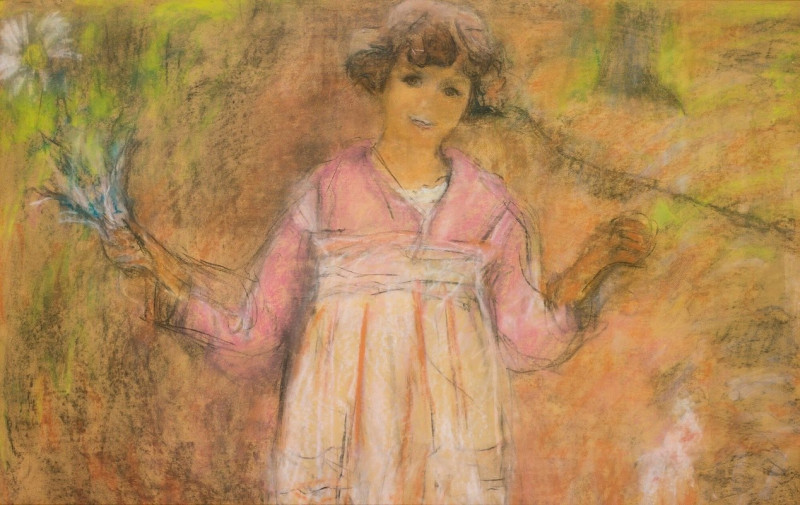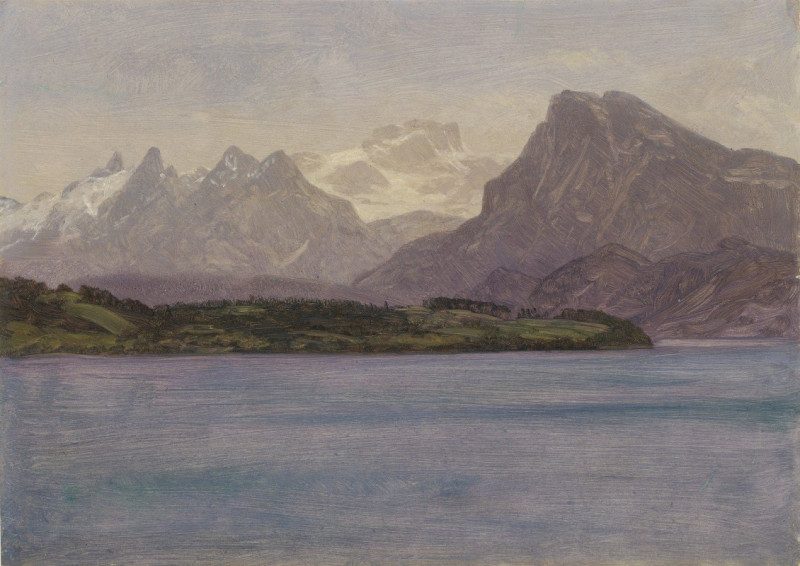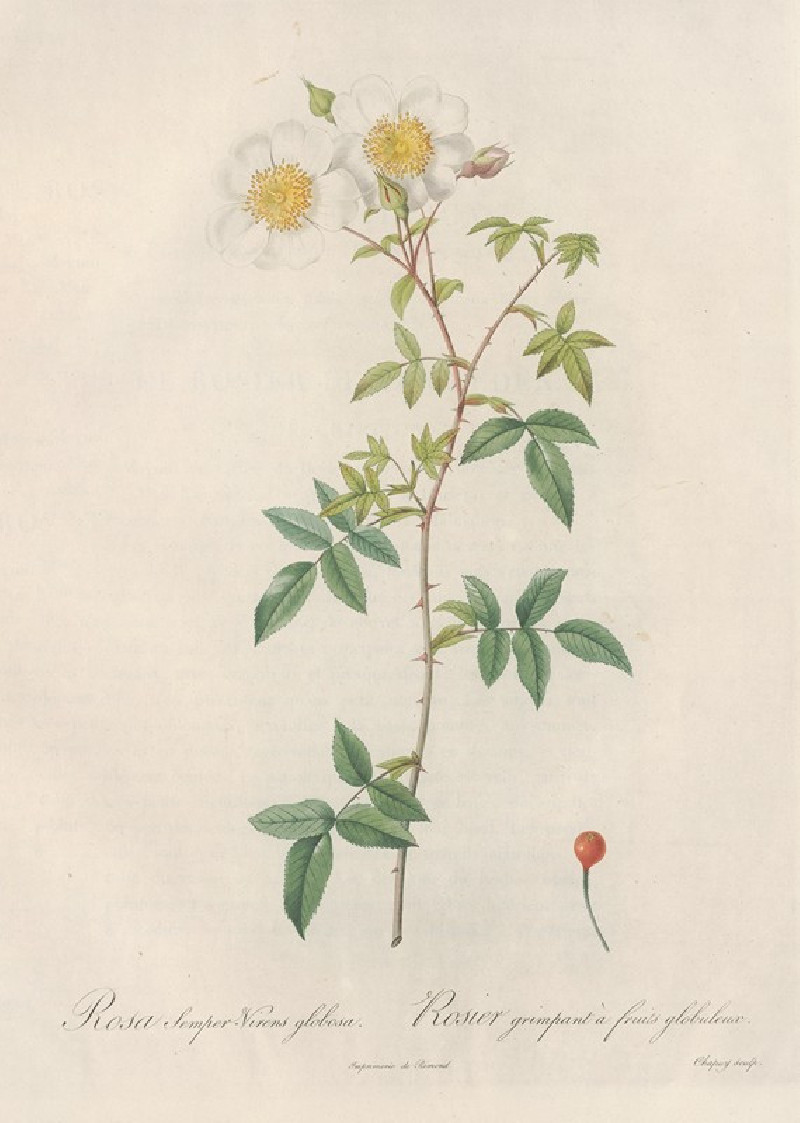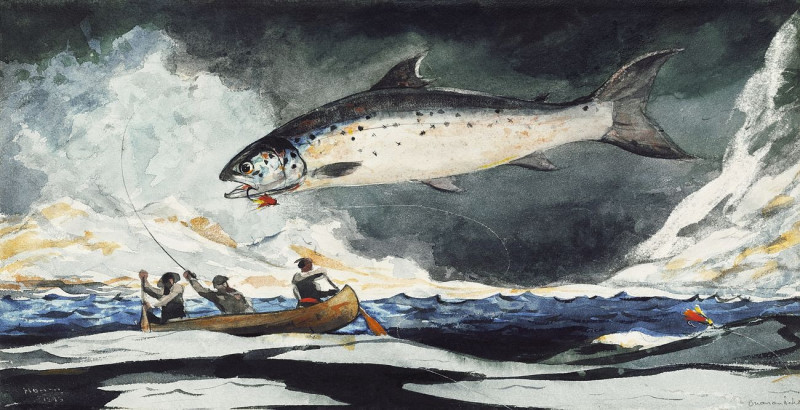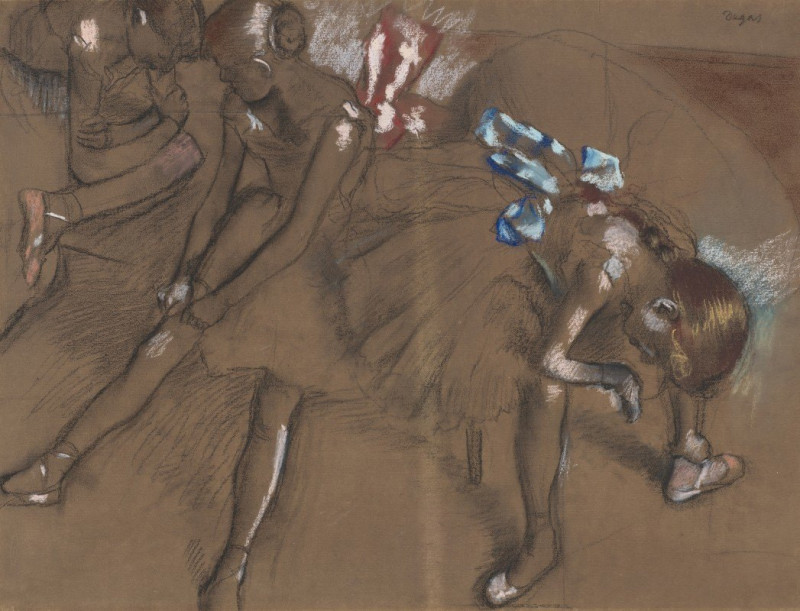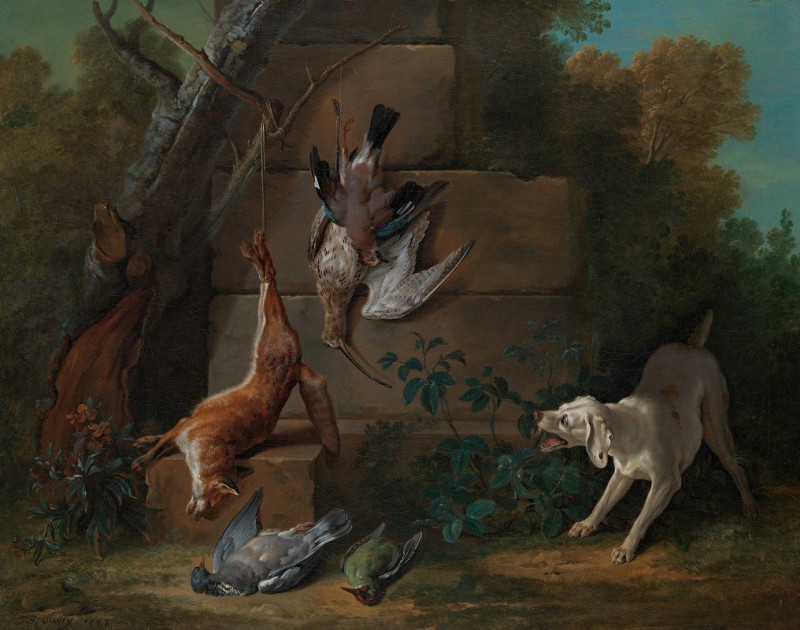Crossing Lancaster Sands (mid 1830s)
Technique: Giclée quality print
Recommended by our customers
More about this artwork
David Cox’s watercolor painting, "Crossing Lancaster Sands," brilliantly captures a moment of historical travel across the perilous tidal sands of Morecambe Bay, famously known for its quicksand and fast-changing tides. Created in the mid-1830s, Cox portrays a wide and evocative landscape, filled with the soft, warm hues of a setting or rising sun stretching across the horizon. The composition grounds viewers in a scene that both invites wonder and implies the inherent risks during such a journey.The painting features a caravan led by a guide on horseback, making their precarious way across the sands. Dominating the foreground is a large horse-drawn coach, surrounded by several horse riders, which helps convey the formidable endeavor of crossing the sands before the tide comes in. Cox’s use of blurred lines and sweeping colors not only conveys motion but also accentuates the transient and ephemeral nature of the scene.Cox, known for his pioneering role in the development of watercolor painting in Britain, demonstrates his mastery over the medium with delicate washes that give the painting an ethereal quality, suggesting the transient light and vastness of the landscape. This piece is a serene yet poignant reminder of the challenges faced by travelers in the past, rendered with a sensitivity that invites reflection on man’s relationship with nature’s vast, untamed elements.
Delivery
Returns
David Cox (29 April 1783 – 7 June 1859) was an English landscape painter, one of the most important members of the Birmingham School of landscape artists and an early precursor of Impressionism.
He is considered one of the greatest English landscape painters, and a major figure of the Golden age of English watercolour.
Although most popularly known for his works in watercolour, he also painted over 300 works in oil towards the end of his career, now considered "one of the greatest, but least recognised, achievements of any British painter."
His son, known as David Cox the Younger (1809–1885), was also a successful artist.

